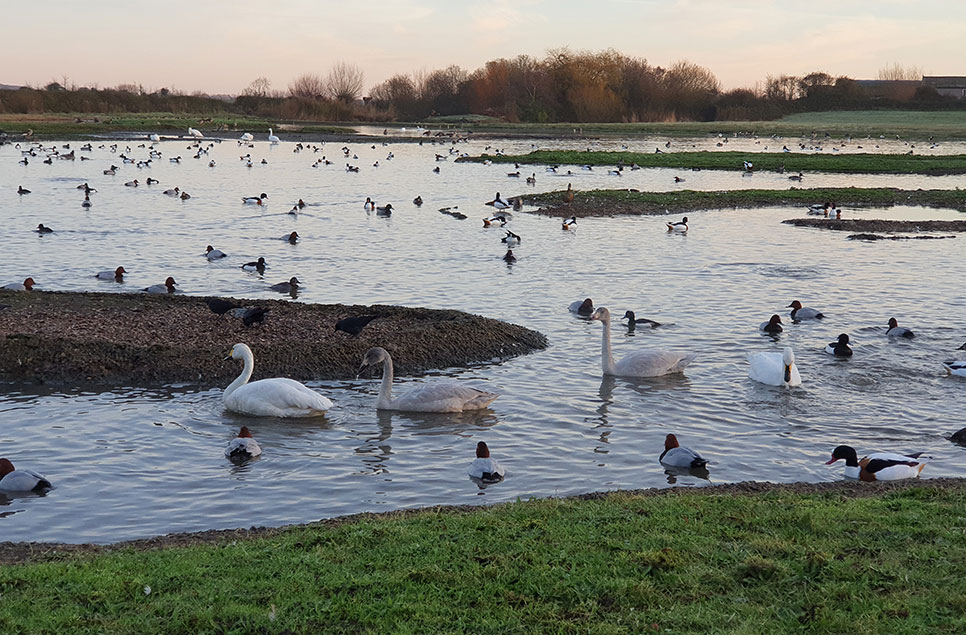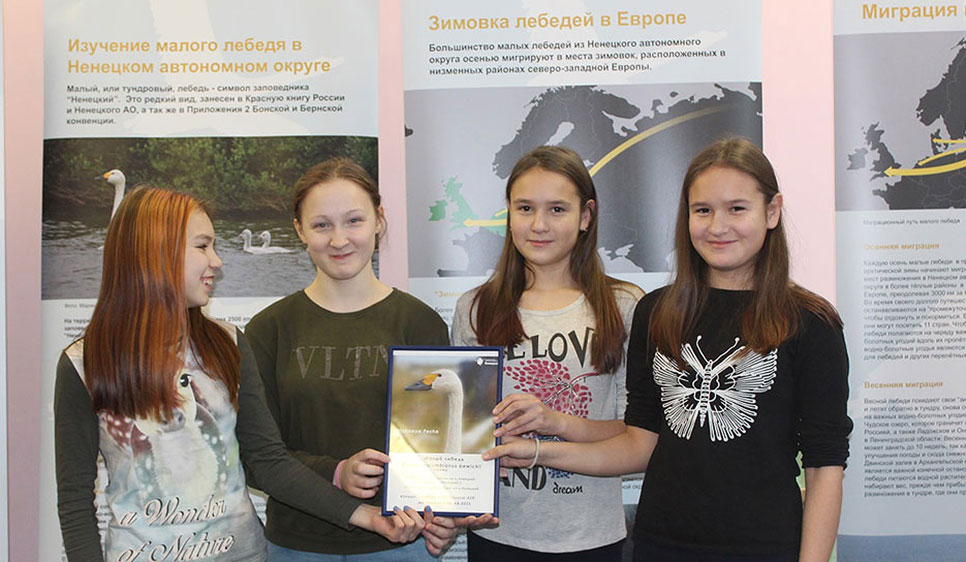Feeding in the fields
With winter in full swing, many Bewick’s swans have arrived at their wintering sites in northwest Europe. WWT’s centres provide some of the most important roost sites for the swans visiting Britain, with WWT Welney alone supporting more than 30% of Europe’s total population in some recent years.
The swans feed on a range of crops on the farmland around our Welney reserve, foraging in early winter on any sugar beet, potatoes, and maize that escaped the autumn harvest, before moving onto wheat, oilseed rape and pasture grass as the season progresses. However, with lots of changes in agriculture in the last few decades, are the swans still finding enough to eat on these winter feeding grounds? Numbers of Bewick’s swans seen across Europe dropped from 29,277 in 1995 to 18,000 in 2010, and WWT is leading international efforts to uncover the reasons behind this worrying decline.
WWT has led two studies that investigated whether changes in food resources could be responsible for the declining Bewick’s swan numbers. In the first study, we found that the relatively small changes in the extent of each key crop in the landscape around our Welney reserve were not related to the changes in the swan counts recorded between the 1950s and 2010s. The swans did not show increased or decreased use of any particular crop type. Moreover, there was no clear trend in the Bewick's swans’ body condition (a measure of their energy reserves) over time, and the swans are still able to regain and maintain condition after arriving from their long autumn migration before embarking on the their northbound migration in the spring. Finally, swans in current winters do not have to spend more time feeding or less time resting compared with the 1970s (when the population was increasing). In the second study, we similarly found that swan body condition has not changed at any of the four WWT sites used by Bewick’s Swans since the 1960s.
Taken together, our research shows that enough food resources are available to swans on their winter grounds to allow them to survive the winter and to depart for their Arctic breeding grounds in good condition. In our future research, we’ll be exploring the role that other factors, such as illegal persecution, lead poisoning, and competition with larger whooper and mute swans, might have played in altering the numbers of Bewick’s Swans that visit WWT centres in winter.
Dr Kevin Wood, Principal Research Officer



